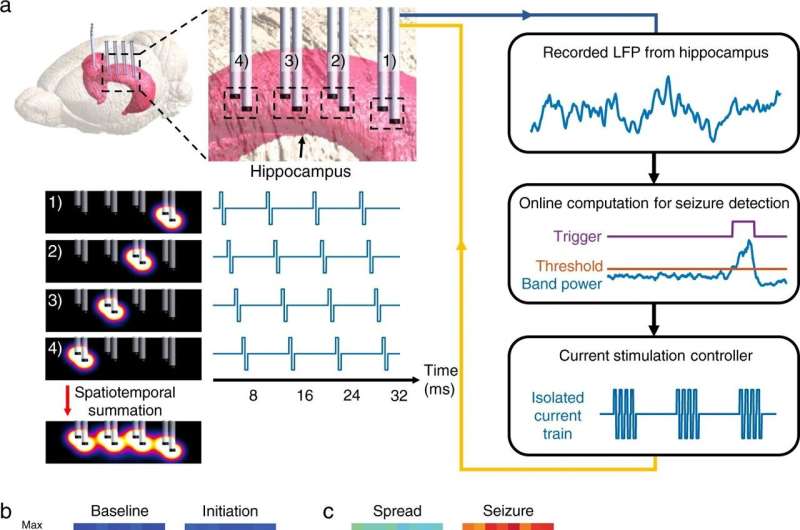This article has been reviewed according to Science X's editorial process and policies. Editors have highlighted the following attributes while ensuring the content's credibility:
fact-checked
peer-reviewed publication
proofread
A novel deep brain simulation approach for treating drug-refractory epilepsy

Epilepsy is a chronic brain disorder characterized by recurrent seizures. About 30 percent of epilepsy patients are known to be drug-refractory, which means they do not respond to drug treatments. Temporal lobectomy of the epileptogenic zone can alleviate or terminate symptoms but surgical resection is not suitable for all patients and neurological damage after surgery can cause motor paralysis or speech impairment, so a new effective treatment is urgently needed.
Recently, a joint team of researchers from POSTECH and Samsung Medical Center developed a therapeutic modality to treat intractable epilepsy by stimulating the deep part of the brain, personalized to each patient's individual brain structure. The findings from the study were published in Nature Communications.
Recently, deep brain stimulation (DBS) has been introduced as an alternative to the surgical approach for intractable epilepsy. DBS is a novel medical technology that implants electrodes deep in the brain to deliver electrical stimulation to the source of the seizures. It can reduce the frequency of seizures by more than 70% and reduce their intensity.
However, conventional DBS has failed to reflect individual brain structures and applied stimuli in a uniform manner. As a result, broadly applied stimuli spread beyond the target tissues, evoking pain, increased depression, and other side effects. It also had a disadvantage of shortening battery life.
To overcome these issues, the joint team proposed a sequential narrow-field (SNF) stimulation method in a rat model. The hippocampus, the most prevalent seizure focus in temporal lobe epilepsy, is large and elongated. The sensors detect when a seizure occurs in the hippocampus, and focus low-intensity stimulation energy on that region only.
The SNF stimulation developed in this study accurately detects the onset of seizures and immediately alleviate symptoms and only stimulate the target area in the hippocampus without affecting other neural tissues. For this, SNF stimulation shows promise to a medical solution that is based on bioelectronic technology that is safer and more effective than the conventional DBS methods, which can be applied to other neurological diseases.
Professor Young-Min Shon (Department of Neurology) who is the director of Biomedical Engineering Research Center at the Samsung Medical Center explained, "This method can be easily applied clinically and promises to become an optimal treatment for intractable epilepsy in the future."
On the significance of the study, the lead investigator Professor Sung-Min Park commented, "This study can be applied to the development of more precise and personalized medical devices as a 'future convergence medical solution research' in which engineering and medicine converge in the areas related to high-level brain stimulation. It is a highly practical engineering-based medical solution that is clinically applicable thanks to the collaboration with Samsung Medical Center."
The work is published in the journal Nature Communications.
More information: Wonok Kang et al, Closed-loop direct control of seizure focus in a rodent model of temporal lobe epilepsy via localized electric fields applied sequentially, Nature Communications (2022). DOI: 10.1038/s41467-022-35540-7



















